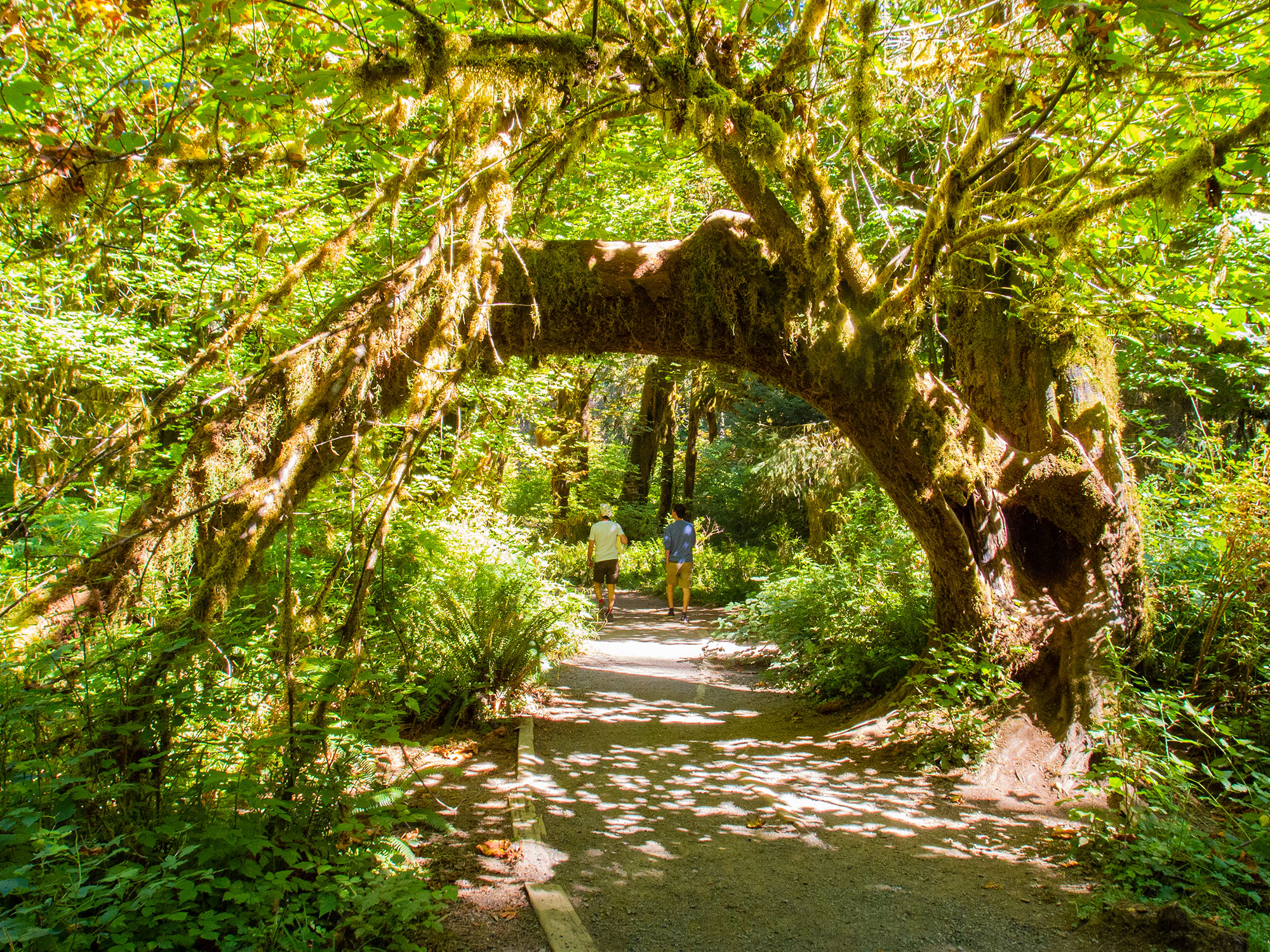What’s most amazing about the Hoh Rainforest isn’t the enormous amounts of rain this area receives a year (140 inches or 3.5 meters!), it’s this other worldliness feeling while standing there in awe of the plants that thrive in this ecosystem. While I’ve visited the tallest trees in the world (Redwoods) and the largest trees (Sequoias) and some of the oldest (Bristlecone Pine), the trees here envelop you in a sense of gigantism. As a frame of reference, imagine a regular tree like an Aspen, Oak, Maple or some other tree and now imagine as if those trees took a growing pill that made the tree extra extra large. This forest used to spread all along the Pacific Northwest, ranging from southeastern Alaska to central California, which boggles my mind because I’ve visited all those regions and they are much hotter and drier (and much less rainy) than they are now. I really do wonder what roamed this land many years ago!
Olympic National Park: Hoh Rainforest
Duration: 1.5 hours
Difficulty: easy
Length: 2.0 miles roundtrip
Danger: roots
Exposure: mostly shaded
Crowd factor: moderately high








As you can tell by the lengthy photo past – and no, all the trees are not the same – I couldn’t stop taking pictures of everything, from the big trees adorned with moss to the ground cover of moss, ferns and other shade loving plants. At first, my eyes took some time to get used to all the monochromatic green, but as my eyes adjusted, I began to notice all the different shades of green, which I found so wonderful to think about the seemingly infinite shades of green. Although the Trail of Mosses and Spruce Nature Trail is a combined figure eight loop of 2.0 miles, I spent several hours slowly meandering and gazing in amazement. Plus, this area can be a launching point for the Hoh River Trail to Blue Glacier. At one of the turns on the trail, the trail opens up to the milky glacial blue Hoh River. This 50-mile river is all from the snowmelt of Mount Olympus. The National Park Service describes this wonderful interaction as the river
creat[es] gravel bars and cut[s] into the lush rain forest along its banks. Immense fallen conifers are swept downriver and create logjams and quiet pools for salmon. Their spawned-out carcasses feed dozens of aquatic and forest animals and fertilize the soil, bringing riches from the ocean to the forest. In turn, the forest lends stability to the river by preventing massive sediment flushing.


This was also my last stop of Olympic National Park. (Other stops: Crescent Lake, Sol Duc Falls, Cape FIattery, and Rialto Beach.) To round out the highlights, I would highly recommend visiting this beauteous rainforest and Hurricane Hill.
Happy travels!
Cat
(Visited in August 2016)






